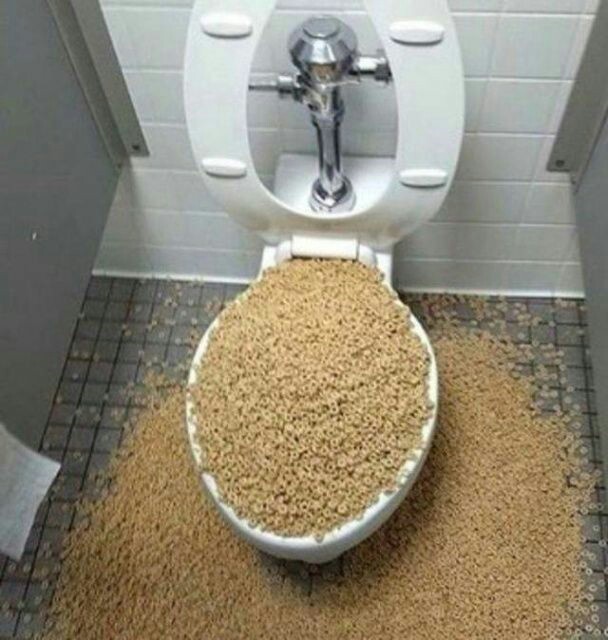We have stumbled upon the article about Think Twice Before Flushing Food Down Your Toilet directly below on the web and reckoned it made good sense to talk about it with you on this site.

Introduction
Many individuals are frequently faced with the dilemma of what to do with food waste, especially when it comes to leftovers or scraps. One typical question that arises is whether it's all right to flush food down the toilet. In this write-up, we'll explore the reasons why individuals might take into consideration flushing food, the consequences of doing so, and alternative techniques for proper disposal.
Reasons individuals may take into consideration flushing food
Lack of recognition
Some individuals may not recognize the prospective injury caused by flushing food down the commode. They might incorrectly believe that it's a safe technique.
Convenience
Flushing food down the bathroom might feel like a quick and simple option to dealing with undesirable scraps, specifically when there's no nearby trash can readily available.
Idleness
In some cases, individuals might merely pick to flush food out of large negligence, without taking into consideration the repercussions of their activities.
Repercussions of flushing food down the commode
Environmental influence
Food waste that ends up in rivers can contribute to contamination and injury aquatic environments. Additionally, the water utilized to purge food can stress water resources.
Plumbing concerns
Purging food can result in stopped up pipelines and drains pipes, triggering pricey plumbing repair services and aggravations.
Types of food that should not be purged
Coarse foods
Foods with fibrous textures such as celery or corn husks can obtain tangled in pipes and create obstructions.
Starchy foods
Starchy foods like pasta and rice can absorb water and swell, leading to blockages in pipelines.
Oils and fats
Greasy foods like bacon or food preparation oils should never be flushed down the toilet as they can solidify and cause obstructions.
Appropriate disposal techniques for food waste
Utilizing a garbage disposal
For homes furnished with waste disposal unit, food scraps can be ground up and purged with the plumbing system. However, not all foods are suitable for disposal in this fashion.
Recycling
Particular food packaging materials can be reused, minimizing waste and reducing environmental influence.
Composting
Composting is a green method to get rid of food waste. Organic materials can be composted and utilized to enrich dirt for gardening.
The relevance of correct waste administration
Lowering environmental injury
Proper waste monitoring practices, such as composting and recycling, assistance decrease pollution and protect natural deposits for future generations.
Safeguarding pipes systems
By preventing the method of flushing food down the commode, homeowners can avoid expensive pipes fixings and keep the integrity of their plumbing systems.
Conclusion
In conclusion, while it may be tempting to purge food down the bathroom for ease, it is essential to recognize the prospective repercussions of this action. By adopting proper waste monitoring techniques and throwing away food waste properly, individuals can add to healthier pipes systems and a cleaner atmosphere for all.
THINK TWICE BEFORE FLUSHING FOOD DOWN YOUR TOILET IN FALLBROOK CA
Let’s be honest, we’re really supposed to be tossing rotten or leftover food in the compost bin or trash can. But many people like to place scraps of food down the drain of, say, their kitchen sink. That’s why the garbage disposal was invented: so we can continue to place certain foods down the drain without clogging our drain in the process. Smart.
But not all of us have the luxury of having a garbage disposal installed. So, you might continue to shove food down your sink drain anyway – or worse: you might flush them down your toilet! If you’re guilty of doing the latter, you’re going to want to stop, and here’s why:
Toilet Drains Aren’t Designed to Handle Food!
There’s your answer: food just doesn’t belong in your toilet. It may seem like your toilet drain is wider than the drains of your sinks, but truth be told, that isn’t actually the case. The narrower pipes of your toilet leave your plumbing at risk for clogging if you do happen to flush your food. In addition, food doesn’t break down as quickly that toilet paper and human waste do. In turn, this leaves your toilet at risk for a nasty clog.
Although a flush of a tiny pinch of food every now and then isn’t going to completely damage your toilet, there are certain foods that should absolutely not be flushed in your toilet at all. These include starchy foods like mashed potatoes, grains, hard pieces of food that are slow to break down, and fats and oils.
The latter categories of food are particularly problematic as they may harden, expand as they absorb water, break down slowly in your system, or generally create the perfect obstruction with their gelatinous composition. These are all things you don’t want in your plumbing system!
Experiencing a Toilet Clog?
Nobody’s perfect, and we all make mistakes. Sometimes one of the mistakes people make is flushing food down their toilet and later realizing that it wasn’t the best thing to do once they see that their toilet is now clogged. Uh-oh!

Hopefully you enjoyed reading our piece about Think Twice Before Flushing Food Down Your Toilet. Thanks a lot for taking a few minutes to read our content. Liked our post? Please quickly share it. Let somebody else check it out. Many thanks for your time invested reading it.
Schedule Here
Comments on “Is it Common to Flush Food in the Toilet?”